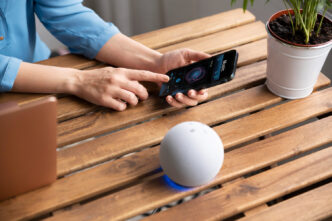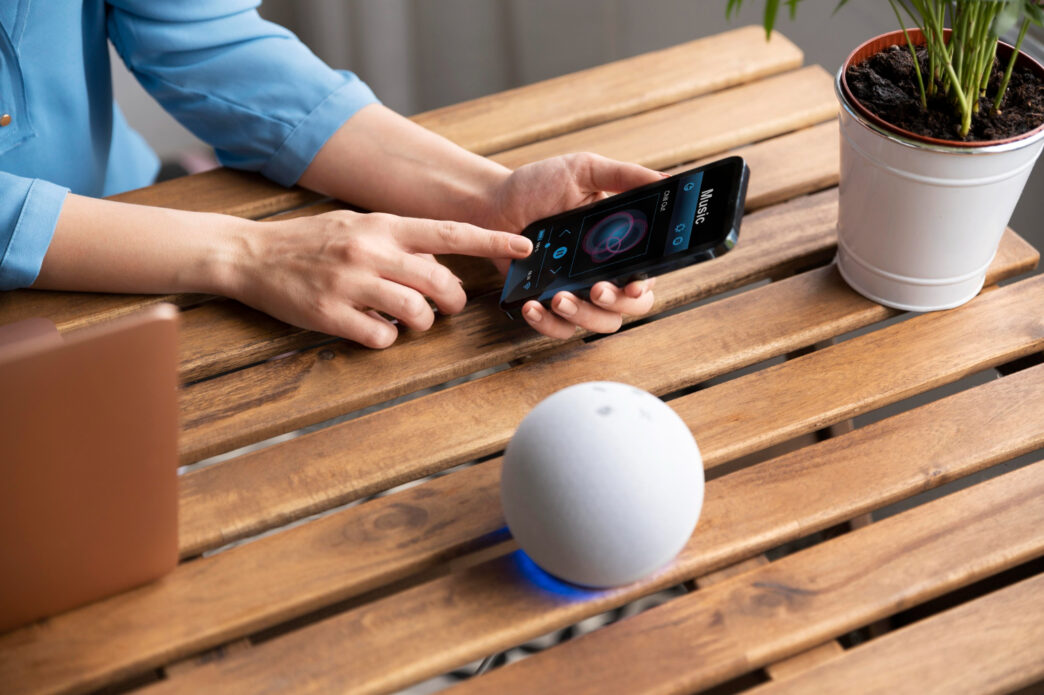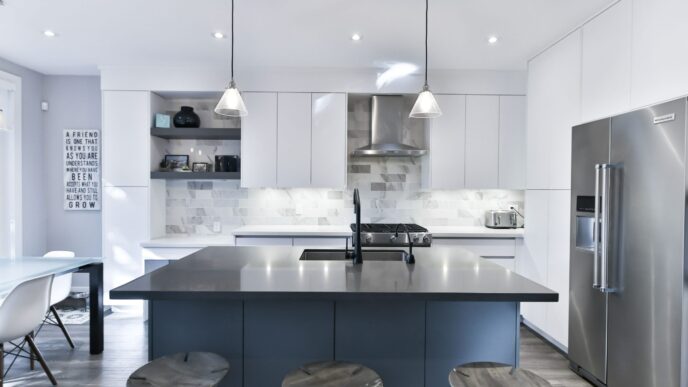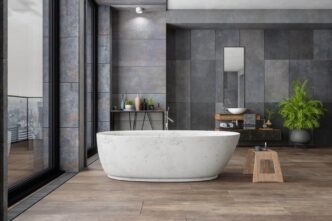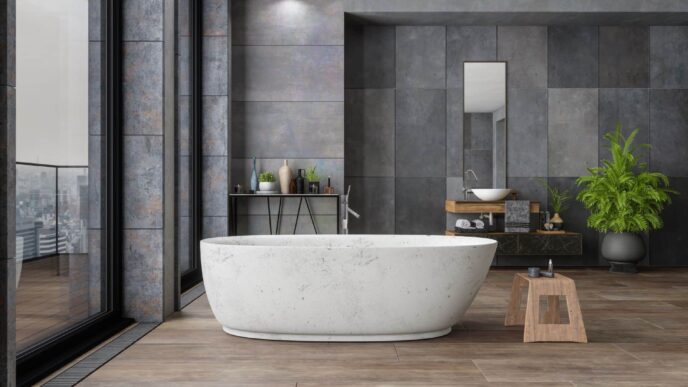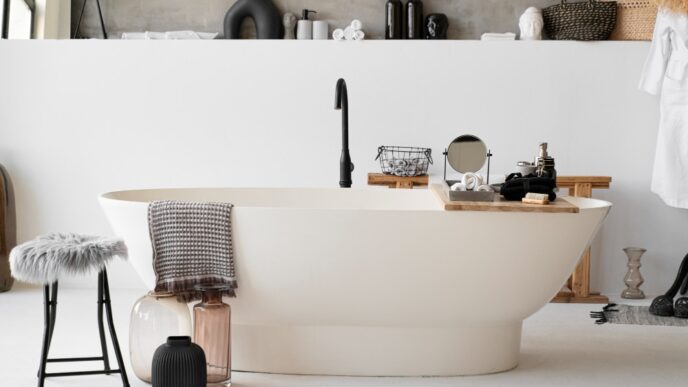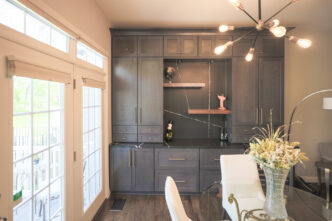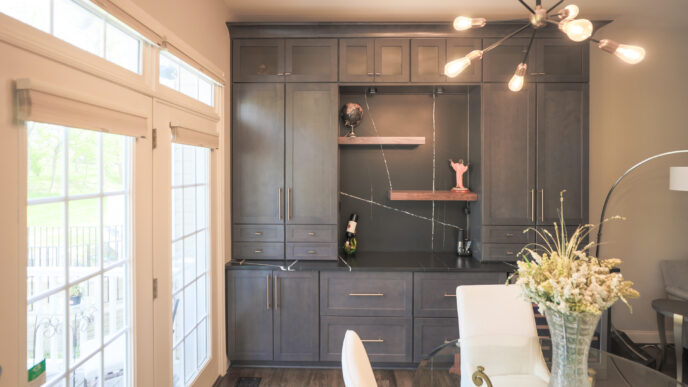Smart home devices from different brands – like smart speakers, bridges, and bulbs – are increasingly working across multiple ecosystems, thanks to standards like Matter. Smart home platforms have historically been siloed ecosystems – what works with Apple’s HomeKit might not work with Google Home or Amazon Alexa. In recent years, industry giants (Apple, Google, Amazon, Samsung, etc.) partnered on Matter, a unified connectivity standard aiming to eliminate these compatibility headaches.
This guide provides a comprehensive overview of device compatibility across major smart home ecosystems (Apple HomeKit, Google Home, Amazon Alexa) and how Matter fits in. We cover all major device categories – lighting, thermostats, locks, security systems, cameras, sensors, and more – with general guidance, product examples, and tips for both beginners and advanced users. You’ll also find comparisons of user experience across platforms, pitfalls to watch out for (like limited cross-platform features or cloud reliance), and best practices for future-proofing your smart home setup.
Major Smart Home Ecosystems Overview
Smart home ecosystem refers to a platform or voice assistant environment that can control devices from various brands. The big three are Apple’s HomeKit (in the Apple Home app with Siri), Google’s Google Home (Google Assistant), and Amazon’s Alexa. Each has its own approach to device integration and unique features, which we outline below. We also introduce Matter, the new industry-wide standard designed to bridge these ecosystems.
Apple HomeKit (Apple Home)

Apple’s smart home platform, now simply called Apple Home (powered by the HomeKit framework), is known for its strong privacy, security, and seamless integration with Apple devices. HomeKit requires accessories to be MFi-certified by Apple, resulting in a smaller but well-vetted device selection (about 1,000 compatible devices as of 2024). Devices are controlled via Apple’s Home app on iPhone, iPad, or Mac, and by voice with Siri. A Home Hub (HomePod speaker or Apple TV) is typically used for running automations and enabling remote access.
- Device Categories: HomeKit supports a broad range of categories – lights, plugs, thermostats, locks, cameras (with HomeKit Secure Video for encrypted recording), sensors, smart garage doors, etc. Apple continues to expand support (e.g. adding robot vacuum cleaners and improved features in the latest Home architecture update).
- Integration & Setup: Adding a HomeKit accessory usually involves scanning an 8-digit or QR code. Communication is often local (over Wi-Fi, Bluetooth, or Thread), with end-to-end encryption for security. This local-first approach means fast response times and that basic functions often work even if the internet is down (though remote control and Siri voice commands may require cloud connectivity via your Home Hub).
- User Experience: Apple’s Home app provides a clean interface with rooms and scenes. Siri voice control is deeply integrated into iOS/watchOS (you can even use an Apple Watch to control devices). Automation capabilities are fairly powerful yet user-friendly – you can create scenes and triggers (e.g. “When I arrive home, turn on lights”). For advanced logic, Apple’s Shortcuts app can tie HomeKit actions into more complex routines. One unique HomeKit feature is Adaptive Lighting (supported lights can auto-adjust color temperature through the day for comfort).
- Notable Features: Apple emphasizes privacy – e.g. camera feeds can be processed locally via HomeKit Secure Video, with clips stored encrypted in iCloud (counts against no user’s storage). Apple also introduced Home Key for locks (certain locks like Schlage Encode Plus allow you to unlock doors via NFC on your iPhone/Watch). Such features only work within Apple’s ecosystem.
- Compatibility & Matter: Historically, using HomeKit meant everyone in the home needed an Apple device. Matter changes this – Apple’s Home app (iOS 16.2 and later) now supports the Matter standard, allowing many new devices to connect. For instance, formerly HomeKit-only brands like Eve have updated products to Matter, so Android users or Alexa/Google can also control them. Matter-enabled devices can be added to Apple Home or other platforms interchangeably. (Note: HomeKit-only devices still exist, but many are adding Matter or at least offering multi-platform variants.)
Google Home (Google Assistant)
Google Home is Google’s smart home ecosystem, centered around the Google Assistant voice AI. It encompasses the Google Home app (available on Android and iOS) and a range of Google Nest devices (speakers, displays, thermostats, cameras, etc.). Google’s platform has a large device library (around 10,000 supported devices as of 2024), thanks to the “Works with Google Home / Assistant” program that certifies third-party products.
- Device Categories: Google Home supports virtually all common smart home device types – lights, switches, thermostats, locks, cameras, sensors, smart appliances, robot vacuums, and more. (Some categories, like security systems, were originally part of “Works with Nest” and later merged into Google Home.) Google’s Nest product line (e.g. Nest Thermostat, Nest Cam, Nest Doorbell) integrates tightly and often acts as the default option for those categories in this ecosystem.
- Integration & Setup: Most devices connect to Google Home via Wi-Fi or cloud-to-cloud linking (using the manufacturer’s account). Google also supports local networking for some devices (the Local Home SDK allows Google Nest hubs to control Wi-Fi devices on the LAN for faster response). Adding a device typically means either using the Home app’s setup flow (for Google Nest products or Matter devices) or linking an account (for third-party services). Google’s Nest Hub, Nest Mini, and other recent devices have been updated to serve as Matter controllers and even Thread border routers (for Thread-based gadgets).
- User Experience: The Google Home app provides a centralized dashboard for devices, organized by home and room. Google Assistant’s voice control works through phones and smart speakers (“Hey Google…”). Google is known for strong natural language recognition – you can ask things like “set the thermostat to 72 degrees” or “Is the front door locked?” and get direct answers. You can also make routines in the Home app (simple automations triggered by voice phrases, time, device states, etc.). In 2023, Google introduced an advanced Script Editor for power users, allowing creation of complex home routines via code or generative AI assistance. This narrows the gap for advanced automation that previously required third-party hubs.
- Notable Features: Google leverages its AI – e.g. Nest cameras can do object and face detection (with subscription). Google Assistant can use your voice queries combined with its search/AI capabilities (for example, answering “When was this light last turned on?” if supported). The ecosystem also integrates with Android well – many Android phones show quick home device controls and support Google Assistant voice on phones even when locked. For multimedia, Google Cast and Nest speakers allow multi-room audio and linking with smart home routines (like a morning routine that gives weather and adjusts lights).
- Compatibility & Matter: Google is a major backer of Matter. As of 2024, Google Home supports Matter and has updated many Nest devices to be Matter controllers. Android’s built-in Fast Pair for Matter helps find and add new Matter devices easily. This means you can buy a Matter-certified device and add it to Google Home – and concurrently to Apple Home or Alexa if you choose. Example: Google’s Nest Thermostat (2020 model) was updated to Matter in 2023, so you can now control it with Apple’s Siri or Amazon Alexa as well (previously it was locked to Google’s app). Keep in mind Google’s own older devices (like Nest Protect or older cameras) may not support Matter yet, but Google has an Alexa skill to integrate Nest cameras and thermostats into Alexa’s app. Overall, Google’s ecosystem works well with multi-platform devices, but some advanced features might remain exclusive to Google (e.g. full Nest camera AI capabilities stay in the Google Home app).
Amazon Alexa
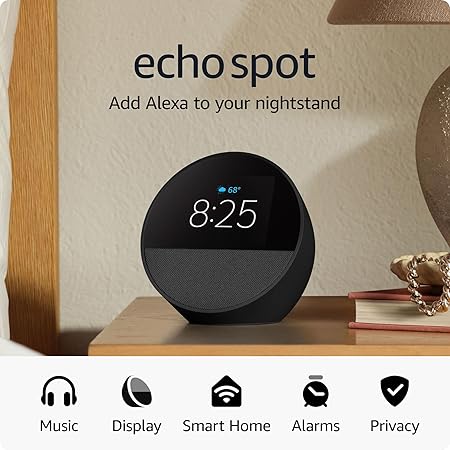
Amazon Alexa is another leading ecosystem, notable for its enormous range of supported devices and third-party integrations. Alexa is the voice assistant that powers Amazon’s Echo speakers and displays, and the system is managed through the Alexa mobile app. Amazon’s “Works with Alexa” program has the widest compatibility – over 85,000 devices supported as of 2024, far outpacing other platforms. This includes not only mainstream brands but many budget and international devices that integrate via Alexa skills.
- Device Categories: Alexa can control all major device types – lights, plugs, switches, thermostats, locks, cameras, alarms, sensors, entertainment devices (TVs, AV receivers), kitchen appliances, and more. Amazon’s own device lineup includes things like Ring security products and Blink cameras (for security), which integrate deeply with Alexa (since Amazon owns those companies). Through skills, Alexa can interface with practically any cloud-connected device – from a Roomba vacuum to a Smart TV – if a skill exists for it.
- Integration & Setup: Setting up devices often involves enabling the manufacturer’s Alexa Skill in the app and signing into the device account, which links the device to Alexa. Many Wi-Fi devices can also be discovered automatically by Alexa if they are in pairing mode. A unique aspect of Alexa’s ecosystem is that some Echo devices have built-in hub hardware: for example, the Echo 4th Gen and Echo Studio include a Zigbee radio (and have been updated to support Matter as controllers). This means those Echos can directly connect to Zigbee sensors, bulbs, or Matter/Thread devices and integrate them locally. Alexa’s architecture is primarily cloud-based – voice commands are processed in Amazon’s cloud, and device control often goes through cloud APIs, but local control is improving (Echo hubs will handle Zigbee/Matter devices locally, and Amazon has introduced Edge processing for certain routine actions to run on the device).
- User Experience: The Alexa app provides device groupings by room and allows creating Routines (Alexa’s term for automations). Alexa Routines are quite flexible – you can trigger actions based on voice phrases, schedules, sensor detections, location, or even sounds (e.g. Alexa can listen for a baby crying or glass breaking and trigger a routine). Alexa’s voice assistant is very popular for its wide skillset – beyond device control, people use it for music, shopping, and general Q&A. In terms of smart home control, Alexa voice commands are straightforward (“Alexa, turn off the kitchen lights”). If you have Echo Show displays, you get a touch interface to adjust devices and view camera feeds (for example, pulling up a Ring Doorbell camera on an Echo Show). Performance is generally good, though reliance on cloud means if your internet or Amazon’s service is down, voice control won’t work (local Zigbee/Matter devices might still respond to basic on/off via the Echo hub, but Alexa’s voice processing needs connectivity).
- Notable Features: Alexa’s massive device support includes many inexpensive gadgets – this can be both a pro and con (great variety, but quality varies). Amazon has a system of “Certified for Humans” for easier setup devices (primarily marketing). Alexa can also do things like Guard mode, where Echos listen for alarms or intruders when you’re away. Another feature is Hunches – Alexa can learn your habits and suggest or automatically take actions (e.g. turning off a light you usually turn off at a certain time). For multi-room audio and announcements, Alexa devices work together (you can have Alexa announce that a door opened, etc.). In general, Alexa offers a very feature-rich automation and voice environment for those who invest in Echo devices.
- Compatibility & Matter: Amazon has aggressively added Matter support. Most newer Echo models and eero routers have been updated to be Matter controllers, supporting Matter over Wi-Fi and Thread. This means you can add a Matter device via Alexa (using a Matter setup code) and control it just like any other Alexa device – and that same device can be simultaneously linked to Apple Home or Google if you want (Matter’s multi-admin allows it). Alexa also continues to support non-Matter cloud integrations for the huge catalog of legacy devices. For instance, many cheap Wi-Fi plugs might not be Matter yet but have Alexa skills – they’ll still work fine with Alexa. Example: Philips Hue lights can work with Alexa in multiple ways (via the Hue Bridge skill, or via direct Matter integration after a Hue Bridge firmware update). Tip: If you have an Alexa hub (Echo with Zigbee) and devices like Zigbee sensors or bulbs, you can connect them directly to Alexa – but note they will then only exist in Alexa’s system (unless you connect them through another hub or Matter bridge for other platforms). Overall, Alexa provides the greatest backward compatibility, and going forward, Matter will simplify adding new devices. Just beware that some Alexa-exclusive devices (like Ring cameras) still don’t work with HomeKit or Google Home due to no Matter support for those categories yet.
The Matter Standard
Matter is a game-changing smart home standard developed jointly by many companies to ensure devices “work with every ecosystem and operate locally”. Matter is not a separate ecosystem you use via its own app; rather, it’s a compatibility layer within ecosystems:
- How Matter Works: A device that is Matter-certified can be controlled by any Matter-compliant controller (Apple Home, Google Home, Alexa, Samsung SmartThings, etc.). Matter runs locally over IP-based networks (typically Wi-Fi or Thread for low-power devices), meaning once set up, commands from your phone or voice assistant go directly to the device over your home network without cloud hops. All Matter devices use a common language (defined by the standard) for basic functions. For example, a Matter light bulb exposes standard controls for on/off, brightness, etc., and any Matter controller knows how to operate it.
- Device Types Supported: Initially, Matter 1.0 (launched late 2022) supported essentials like light bulbs, plugs, switches, thermostats, smart locks, sensors, shades, and media devices (e.g. TVs). The latest release (Matter 1.4 in late 2024) has expanded to cover most common device categories– including robot vacuums, appliances (like smart fridges and ACs), ceiling fans, and more. Notable exceptions still unsupported (as of 2025) are security cameras and full alarm systems. So, you won’t find a Matter-certified camera yet, and features like doorbell video or security panel arming aren’t standardized in Matter at this point. The standard is evolving quickly, though, with new device types and features in each update.
- Multi-Platform Control (Multi-Admin): Matter’s killer feature is multi-admin, which allows you to connect a Matter device to multiple ecosystems at once. In practice, you can set up a Matter device with, say, Apple Home, and also later add it to Google Home or Alexa without unpairing it from Apple. Each platform gets its own secure connection (Matter uses a concept of fabrics to manage separate controllers). Real-world example: The Eve Energy smart plug was formerly HomeKit-only; after a Matter update, you can have it in Apple Home and also expose it in the Alexa app and Google Home app simultaneously. This means different family members can use their preferred assistants to control the same physical device, and automations from different platforms can both access it (though you’ll need to be careful to avoid conflicting commands). Multi-admin fulfills the promise of “no lock-in” – you can mix and match without rebuilding your home from scratch if you switch assistants.
- Matter Controllers & Hubs: To use Matter devices, you need a Matter controller in your ecosystem. All the major platforms have updated their hubs or apps to support this. For Apple, a HomePod or Apple TV (or just an iPhone on the local network) can commission Matter devices. Google has enabled Nest Hubs, Nest Wifi, and even Android phones to act as Matter controllers. Amazon updated nearly all Echo models (except some very old ones) and their Eero routers to serve as Matter controllers. Many of these also double as Thread border routers (for Thread-based Matter devices like sensors), but if one platform’s hub isn’t Thread-capable, you can add any Thread border router (even from another brand) to your network – Thread is an IP-based mesh that can coexist with multiple border routers. Bottom line: If you already have an Echo, Google Nest Hub, Apple TV, etc., you likely have what’s needed to start using Matter devices on that platform.
- User Experience: Matter device setup is intended to be easy and consistent. You typically scan a QR code (the Matter QR code) and the device is securely added. From then on, you control it in the Home app/Alexa app/Google app like a native device. In fact, a user might not even realize a device is “Matter” – they’ll just see that it works with multiple systems. One thing to note is that Matter focuses on core functionality. Some advanced features might not be exposed across all ecosystems. For example, a smart lock added via Matter will universally support lock/unlock, but features like managing PIN codes or auto-lock settings might only be available in certain platforms. (Apple Home and SmartThings allow setting PIN codes on Matter locks, whereas Google Home and Alexa currently do not.) Similarly, a thermostat on Matter can adjust temperature but might not expose every proprietary mode or sensor that the device has. Over time, Matter is expected to add more features to close these gaps.
- Current Limitations: While Matter holds great promise, early adoption has had some hiccups. Not all existing devices have received Matter updates (your older gear might stay tied to its original ecosystem unless you use a custom bridge). And some of the first Matter integrations have revealed bugs or performance issues. For instance, users who updated their Philips Hue Bridge to Matter reported slower responses and devices disconnecting across platforms, to the point where one reviewer said “everything is broken” after migrating – with bulbs not working reliably on multiple platforms and needing repeated resets. Philips issued fixes, but the lesson is that Matter (as of 2024) is still maturing. It’s wise to update carefully and not immediately switch a rock-solid setup to Matter if it’s working fine. That said, many people are using Matter devices successfully, and the compatibility benefits are already being realized in simple device types (plugs, lights, sensors).
- Matter vs. Traditional Integrations: You might wonder if you should replace all your “Works with HomeKit/Alexa/Google” integrations with Matter ones. At this stage, think of Matter as augmenting rather than fully replacing existing methods. If you have a device that works well with one ecosystem but you want it in another, Matter (or a firmware update enabling Matter) can bridge that gap. New devices you buy going forward – look for the Matter logo to be more future-proof. But if a cloud integration or proprietary hub is giving you features that Matter doesn’t yet support (like your camera’s advanced features or your lighting system’s dynamic effects), you might keep using the old integration alongside Matter. The good news is many devices can be used both ways (e.g. Philips Hue can work via its existing integrations and via Matter concurrently through its bridge
Comparison of Ecosystems
The table below summarizes key points about Apple, Google, Amazon, and Matter side-by-side:
| Ecosystem | Approx. # of Compatible Devices (2024) | Platform Access & Voice Control | Notable Traits and Compatibility |
|---|---|---|---|
| Apple Home (HomeKit) | ~1,000 devices | Apple-only (iPhone/iPad/Mac for app; Siri for voice via HomePod/Apple devices) | Highly secure (end-to-end encryption), local control focus, fewer but quality accessories (MFi certified). Now supports Matter in Home app. Non-Apple users cannot directly use HomeKit unless devices are Matter-enabled. Features like HomeKit Secure Video and Home Key add unique value. |
| Google Home (Assistant) | ~10,000 devices | Cross-platform app (Android & iOS); Google Assistant voice via Nest devices or phone | Broad device support including Nest products. Strong voice AI and search integration. Offers both cloud and increasing local control. Fully supports Matter. Advanced routines via Script Editor. |
| Amazon Alexa | ~85,000 devices | Cross-platform app; Alexa voice via Echo devices or Alexa app | Largest ecosystem of third-party devices. Supports integration via Skills and local hub features with some Echo devices. Most Echo models support Matter. Robust voice features and routines. Relies on cloud for voice processing. Some devices (e.g., Ring) not compatible with HomeKit. |
| Matter (Standard) | Hundreds of products certified (and growing) | N/A (No standalone app; used via controllers in other ecosystems) | Not a standalone ecosystem but a unifying standard. Enables cross-platform control and local interoperability. Supports most key device categories. Great for future-proofing, though still expanding support for complex devices like cameras. |
Device Categories: Compatibility Across Platforms
In this section, we explore major smart home device categories and how they typically fare in each ecosystem. The good news is every ecosystem can handle the basics – if you just want a smart light on a schedule or a door locked by voice command, Apple, Google, and Alexa can all do that. The differences emerge in setup, advanced feature support, and product availability for each platform. We also highlight specific product examples known for working across multiple ecosystems (often via multi-protocol or Matter support).
Lighting and Smart Plugs
Smart lighting (bulbs, LED strips, wall switches) and smart plugs/outlets are among the most popular entry-level devices. These are well-supported across HomeKit, Google, Alexa, and also by Matter.
- Compatibility: Most major smart bulbs and plugs offer broad compatibility. For instance, Philips Hue is frequently recommended for its robust system and interoperability – Hue bulbs (with the Hue Bridge) work with Alexa, Apple HomeKit, Google Home, IFTTT, and more. In fact, before Matter existed, the Hue Bridge enabled simultaneous multi-platform control (e.g. you could link Hue to HomeKit and Alexa at once via separate integrations). Now, Hue is adding Matter support as well (via a bridge update), although as noted, you might hold off until the kinks are worked out.
- HomeKit Notes: HomeKit lighting products range from Wi-Fi bulbs (e.g. LIFX, Meross) to thread-based bulbs (like Nanoleaf Essentials). HomeKit introduced Adaptive Lighting, which automatically tunes color temperature throughout the day (supported by some bulbs like Philips Hue via HomeKit, or Nanoleaf bulbs). If a bulb or plug isn’t HomeKit-compatible out of the box, adding a HomeKit hub like Eve Light Strip (now Matter-enabled) or using a bridge (like Hue, or Lutron Caséta bridge for dimmers) can bring it into Apple’s realm.
- Alexa/Google Notes: These platforms can work with many Wi-Fi based lights (TP-Link Kasa, Feit, Sengled, etc.) through cloud skills or local connectivity. Alexa and Google both allow grouping lights by room and controlling collectively (“Turn off all kitchen lights”). They’ve also each implemented circadian lighting features – Alexa’s “Adaptive Lighting” and Google’s similar functionality on some devices – which adjust color temperature automatically (similar to Apple’s feature). When using smart plugs, Alexa/Google might have slight convenience edge because many inexpensive plugs have native Alexa/Google support. With HomeKit you need to find HomeKit-compatible models (or use Matter plugs). Fortunately, Matter has made smart plugs a commodity – a plug with the Matter logo will work with all three ecosystems out of the box.
- Matter Advantages: A Matter light or plug is one of the easiest ways to ensure cross-platform control. You can set up the device on your preferred app and then share it to other apps via Matter’s multi-admin. For example, a TP-Link Tapo smart plug (Matter version) can be added to Apple Home and then also to Alexa for voice control on an Echo. The basic on/off and dimming will be available everywhere. Do note that manufacturer apps might still offer extra features (like custom effects or energy monitoring history) that standardized controls don’t – you can always use the original app in parallel if needed.
Recommended examples: Philips Hue White/Color bulbs (with Bridge) – highly reliable and work in any ecosystem. LIFX bulbs – Wi-Fi based, direct control with Alexa/Google/HomeKit (no hub). Eve Energy smart plug – now Matter-enabled, so it works with Siri, Alexa, Google, and even threads into Thread networks for fast local response. Meross smart plugs – budget-friendly models that often come in two versions (make sure to buy the one with HomeKit support if you need it, or use their new Matter plug).
Thermostats and Climate Control
Smart thermostats manage your HVAC system and are another core category. Compatibility used to be a big consideration here, as some thermostat brands aligned with specific ecosystems.
- Compatibility: Google’s Nest Thermostat (and Nest Learning Thermostat) historically worked mainly with Google (and formerly with Alexa via the Nest skill). Apple HomeKit users often chose Ecobee or Honeywell Lyric instead, since Nest didn’t support HomeKit. Now, thanks to Matter, even thermostats are coming together – the Nest Thermostat (2020 model) gained Matter support, making it visible in Apple Home and Alexa. However, at this time only a few thermostats are Matter-enabled (in the US, Google’s Nest models and a Meross thermostat). Ecobee has pledged Matter support via update, but as of late 2024 their thermostats hadn’t received it yet.
- HomeKit Notes: HomeKit supports thermostats well – you can use Siri to set temperatures or include thermostat changes in scenes (“Good Night” scene setting the heat lower, for example). Ecobee is a top choice for HomeKit users, as it natively works with HomeKit, Alexa, and Google Assistant all at once. (Ecobee even has Alexa built into the unit as an optional voice interface, and it supports Siri through HomePod integration.) If you have a HomeKit-only thermostat (like certain Honeywell models or older Ecobees), it won’t show up in Alexa/Google without Matter or a hub like Home Assistant – consider future-proofing by choosing a model with multi-platform support.
- Alexa/Google Notes: Alexa and Google can control most Wi-Fi thermostats via skills or direct integration. Nest being Google’s own is tightly integrated (with features like voice notifications: “The house is cooling down due to an open window” if a sensor is detected). Alexa can integrate thermostats from Ecobee, Honeywell, Nest (via the Google Nest skill), and many others. Both Alexa and Google allow thermostats in routines – e.g. an Alexa routine could turn down the heat when you say “Alexa, good night,” and Google’s routines can do similarly. One caution: if you use multiple ecosystems simultaneously (say Google Nest Thermostat in both Google Home and Apple Home via Matter), ensure changes stay in sync. Matter handles this by having the device report state changes to all controllers, but occasional cloud lag could cause slight discrepancies in what one app shows vs another.
- HVAC Systems & Others: Beyond central thermostats, there are devices like smart AC controllers (for mini-split units) – e.g. Sensibo or tado° – many of these support multiple ecosystems (Sensibo works with Alexa/Google/HomeKit via cloud and now explores Matter). Smart radiator valves in Europe are gaining Matter support (several European brands are Matter-ready). Alexa and Google also integrate with some ceiling fans or window AC units (if they have smart modules or via smart switches).
- Recommended examples: Ecobee SmartThermostat Enhanced/Premium – works with Apple, Alexa, Google, SmartThings, IFTTT out of the box (a great all-rounder, pending a Matter update). Google Nest Thermostat (2020) – now Matter-enabled, bringing Google’s slick design into other ecosystems (keep in mind advanced Nest features like HVAC monitoring still require the Google Home app). Honeywell Home T9/T10 – widely compatible via cloud integrations (Alexa, Google, and HomeKit support on certain models). If you prefer simplicity and HomeKit-only, the Emerson Sensi Touch is a solid thermostat with HomeKit (and Alexa/Google via cloud). For mini-splits, Sensibo Sky or tado° Smart AC Control – both offer HomeKit, Alexa, Google integration (and likely to integrate with Matter’s climate controller spec eventually).
Smart Locks and Home Security
Smart locks and related security devices (alarm systems, doorbells, sensors) bring up important compatibility and feature questions. Locks especially are something you want to work reliably with your routines (like auto-locking at night or unlocking via voice PIN).
- Locks Compatibility: Many smart locks support multiple platforms, but with caveats. August and Yale are big players – the August Wi-Fi Smart Lock, for example, works with Siri (HomeKit), Alexa, and Google Assistant out of the box. Schlage Encode Plus was one of the first to support Apple’s Home Key and HomeKit, while also working with Alexa (via the Schlage/Alexa skill) – making it fairly universal. With locks, Matter has been slow to roll out; only a handful of models support Matter as of 2024. If using a Matter lock, note that only basic lock/unlock is guaranteed across ecosystems – setting user PIN codes or checking battery status might require the manufacturer’s app or may only show up in certain ecosystems. For example, Apple Home can set PIN codes on a Matter lock (and even recently enabled Apple Home Key for certain Matter locks), but Alexa/Google cannot set PINs via Matter yet. So, if advanced features are important, you might still rely on the lock’s native app alongside the ecosystem integration.
- HomeKit Notes: HomeKit has solid lock support. You can unlock via Siri (optionally requiring your iPhone to be unlocked for security), and integrate locks into automations (e.g. unlocking could trigger lights). Many HomeKit locks use Bluetooth or Thread (August, Level, Yale Assure with modules, etc.), typically requiring a nearby hub (an Apple TV/HomePod or the lock’s own Wi-Fi bridge). Ensure any lock you buy for HomeKit explicitly says Works with Apple Home – some variants differ slightly (for instance, certain Yale or Schlage models have separate SKUs for HomeKit). If a lock isn’t HomeKit-compatible, you cannot easily integrate it into HomeKit unless you use a bridge like Homebridge or the manufacturer adds Matter support.
- Alexa/Google Notes: Alexa and Google Assistant both can control locks (usually via cloud). Alexa lets you lock by voice by default and unlock via voice if you set a PIN code in the Alexa app. Google similarly allows voice lock/unlock with a PIN. Alexa routines can include locks (for example, locking doors at a certain time or when you say “Goodnight”). Google’s routine capabilities for locks are a bit more limited in the app UI, but you can use Assistant voice or the script editor. Security systems like Ring Alarm (Amazon) or Nest Secure (discontinued Google product) integrate primarily into their own ecosystems – e.g. Ring works seamlessly with Alexa (you can arm/disarm via voice with a PIN and have sensors trigger Alexa routines), but Ring has no official HomeKit or Google Home integration. For HomeKit users, options like Abode or Honeywell/Resideo security systems have HomeKit support, and those also work with Alexa/Google, giving multi-platform flexibility. Many DIY alarm hubs now support Matter’s sensor/lock standards partially, but a full alarm system standard in Matter is still forthcoming.
- Doorbells & Cameras: (We’ll cover cameras in the next section, but it’s worth noting under security that video doorbells often tie you to an ecosystem. E.g. a Ring Doorbell works best with Alexa (Echo shows can automatically display who’s at the door). Google’s Nest Doorbell integrates with Google’s displays. HomeKit has HomeKit Secure Video doorbells from Netatmo, Logitech, etc., but they are fewer. There’s currently no Matter support for cameras/doorbells, so interoperability is limited – you might end up using something like a Homebridge plugin to get a Ring doorbell into HomeKit, for instance.)
- Recommended examples: August Wi-Fi Smart Lock (4th Gen) – retrofits existing deadbolts and supports HomeKit, Alexa, Google (August’s cloud allows multiple integrations simultaneously). Yale Assure Lock 2 – available in various modules (get the Wi-Fi or Matter module for widest compatibility; the Matter version should work across ecosystems, while the Wi-Fi version works with Alexa/Google and a separate HomeKit module is available). Level Lock+ – a sleek lock that is HomeKit-native and now Matter (it was one of the first Matter locks), so it can be tied into other platforms. Schlage Encode Plus – great if you’re in Apple’s camp (Home Key feature) but also works with Alexa; however it lacks broad availability. For an alarm system, consider Abode – it’s one of the few that supports HomeKit, Alexa, and Google Assistant (and Abode’s motion/door sensors even show up in HomeKit). If you prefer Amazon’s ecosystem, Ring Alarm is excellent with Alexa (and exposes sensors to Alexa routines), though you’ll need third-party solutions to use Ring devices in HomeKit.
Cameras and Video Doorbells
Smart cameras and video doorbells are a special category because of the heavy video processing and privacy considerations. They are not yet covered by Matter, so compatibility relies on specific support for each platform.
- HomeKit Secure Video (HSV): Apple’s approach for cameras is tightly controlled. Only certain cameras that support HomeKit Secure Video can be added to the Home app (e.g. Logitech Circle View, EufyCam 2 Pro, Aqara Camera Hub G3, etc.). These feed video to your HomeKit hub (Apple TV/HomePod) for analysis and then to iCloud (encrypted) if you have an iCloud+ plan. HomeKit cameras integrate nicely with Apple’s ecosystem (motion notifications in Home app, facial recognition using your Photos library, etc.), but these cameras often also support Alexa/Google via their own skills. For instance, Eufy and Arlo cameras can work with HomeKit (select models) and have Alexa skills to view live feeds on an Echo Show, and Google integration to Chromecast or Nest displays. When using such cameras, you might end up using each ecosystem separately (e.g. HomeKit for recording and iPhone alerts, Alexa to pull up the feed on an Echo Show by voice).
- Alexa and Google Cameras: Amazon’s Ring cameras and doorbells, and Google’s Nest cameras/doorbells, are obviously tailored to their parent ecosystems. Alexa can show Ring or Blink camera feeds on Echo Show or Fire TV, and you can get motion announcements (“Someone is at your front door”) through Echos. Google does similar with Nest Doorbell + Nest Hub. Both Alexa and Google Assistant offer rich notifications on your phone or their displays (e.g. Nest Hub can show who’s at the door with face detection if you use Nest Aware). They also allow two-way talk via the assistant devices. However, cross-platform use is limited: Google does provide an Alexa skill for the newer Nest Cams/Doorbells, so Alexa can display Nest camera feeds (bridging Google → Alexa). But the reverse (Ring to Google) isn’t officially supported, nor is either to HomeKit without unofficial methods. So if you invest in one brand’s camera system, you may be tying yourself to that brand’s app or one of the big ecosystems.
- Third-Party Cameras: Aside from Ring/Nest, many third-party cameras (Arlo, Eufy, Wyze, TP-Link Kasa, etc.) have integrations. Arlo, for example, works with Alexa and Google natively (Arlo cameras can be viewed on Echo Show or Google Nest Hub), and certain Arlo models support HomeKit. Wyze Cams work with Alexa and Google (for live viewing) but not HomeKit (some people use Homebridge plugins or RTSP streams to HomeKit). Nest cameras (new models) don’t work with HomeKit either, but can work with Alexa via the skill as mentioned. When buying cameras, decide which ecosystem you want at the center for monitoring/notifications. Some power users mix systems (like using HomeKit Secure Video for privacy but also connecting the camera to Alexa for convenience on an Echo Show).
- Doorbells: Smart doorbells mirror the camera situation. Ring is Alexa-only (no official integration with Google or Apple). Nest Hello/ Doorbell is Google-focused (with the Alexa skill bridging only the viewing aspect). HomeKit has a few doorbells (Logitech Circle View Doorbell, Netatmo Smart Doorbell) – those won’t integrate with Alexa/Google for viewing, but HomeKit itself can distribute doorbell press notifications to HomePods (chimes) and Apple TVs. If having a unified doorbell experience across platforms is a priority, one workaround some people use is a doorbell that triggers a simple sensor – e.g. a Ring doorbell could be set to trigger an Alexa routine and a HomeKit automation via Homebridge sensor, but this is quite advanced.
- Recommended approach: It’s often best to choose the camera/doorbell system that aligns with the platform you use most for security. If you are deep into Alexa, Ring or Blink (Amazon’s cameras) will integrate best. If you prefer Google, Nest Cam and Nest Doorbell integrate seamlessly with Assistant devices. For HomeKit enthusiasts, look at Eufy or Logitech cameras that support HSV. Some specific cross-platform friendly options: EufyCam 2/2 Pro – supports HomeKit Secure Video and has Alexa/Google viewing capability (through Eufy’s skill; no cloud subscription needed for local storage). Arlo Essential Video Doorbell – supports HomeKit (wired version), Alexa, and Google (a rare triple-threat, though HomeKit Secure Video support is limited to certain models). Keep in mind you might need to use multiple apps or pay for subscriptions (Ring Protect, Nest Aware, Arlo Secure, etc.) to get full features on each platform – this is a classic pitfall in camera compatibility.
Sensors and DIY Devices
Sensors (motion sensors, contact/window sensors, water leak detectors, smoke alarms, etc.) are fundamental for automations. Many sensors are battery-powered and use Zigbee, Z-Wave, or Thread radios, which means they often require a hub or bridge of some sort.
- HomeKit Sensors: HomeKit has a rich selection of sensors, especially now with Thread. Eve offers motion, contact, leak, air quality sensors that (after Matter updates) can work with other ecosystems too. Aqara (which uses Zigbee) has affordable sensors – their hub exposes these sensors to HomeKit and Alexa/Google (and Aqara is rolling out Matter support via new hubs). If a sensor is HomeKit-native (like Eve Motion or Aqara via HomeKit hub), you can directly use it in Home automations. HomeKit can also consume data from certain connected alarm systems or bridges (e.g. a Philips Hue motion sensor connected to a Hue Bridge can show up in HomeKit).
- Alexa/Google Sensors: Alexa can directly use Zigbee sensors if you have an Echo with a Zigbee hub. For example, a SmartThings motion sensor or Sengled contact sensor can be paired to an Echo 4th Gen – it will show up in Alexa app and you can trigger routines with it. Alexa also accepts sensor information via skills (some Wi-Fi sensors have an Alexa skill to report status). Google Home, historically, was less sensor-focused – they didn’t expose sensors in the Home app until recently. However, with Matter and Nest’s own sensors (e.g. Nest Detect was part of Nest Secure), Google is starting to integrate sensors. Google’s script editor can use device triggers if supported. Still, Alexa currently has an edge in easy sensor routine integration for average users.
- Matter for Sensors: Sensors are well-covered by Matter (contact sensors, motion sensors, temperature, etc. are in the standard). A Matter sensor (likely Thread-based for long battery life) can be shared to all platforms. For instance, the Aqara Door/Window Sensor P2 (Thread with Matter) can be added to Apple Home and also show up in Alexa and Google, allowing one sensor to trigger automations in any ecosystem you prefer. This is great for future-proofing a home’s safety devices. Do note that the platform’s capabilities still matter: e.g. Google Home at launch didn’t show Matter contact sensors in the UI (they could trigger routines behind the scenes), whereas Apple Home will display it and allow automation triggers normally. These are software updates that will improve over time.
- DIY and Advanced: Advanced users often use hubs like SmartThings or Home Assistant to unify sensor data and then push it into ecosystems. For example, Home Assistant can take a cheap Zigbee sensor and expose it to HomeKit or Alexa as a virtual sensor. But with Matter, a lot of this DIY bridging may become unnecessary as more sensors ship with Matter support or at least with multi-ecosystem compatibility via their hubs.
- Recommended examples: Aqara sensor lineup – inexpensive and with the Aqara Hub, you get HomeKit, Alexa, Google integration (plus Aqara is updating hubs to support Matter, which will make their sensors visible as Matter devices). Philips Hue Motion Sensor – pairs with the Hue Bridge, works with HomeKit and Alexa/Google (via Hue integrations), very responsive for lights. Eve Motion (2nd gen) – now Matter-capable (Thread), originally HomeKit-only but can now be used in any system after firmware update. Fibaro Flood Sensor (Z-Wave) or First Alert Onelink Smoke Detector for HomeKit – these are HomeKit friendly out of the box, and Alexa/Google can be linked via their cloud (or you could connect them to a hub that bridges to those platforms). If you’re all-in on Alexa, Ring Alarm’s sensor kit or Echo Sensor (a new Echo accessory) can feed into Alexa routines easily (though not into HomeKit without workarounds).
Other Device Categories (Vacuum Cleaners, Appliances, etc.)
Beyond the common categories, the smart home extends to robot vacuums, smart appliances, blinds, speakers, and more. Each has its own compatibility story:
- Robot Vacuums: Many robot vacuums (e.g. iRobot Roomba, Roborock, Neato) have Alexa and Google Assistant support (“Alexa, tell Roomba to start cleaning”). Apple HomeKit did not officially support vacuums until recently – as of iOS 16/17, robot vacuum is a recognized device type (Apple’s Home architecture update explicitly mentions support for robot vacuums). But very few vacuums have added HomeKit (some users use HomeBridge plugins to integrate Roomba with HomeKit unofficially). Matter 1.1 added robot vacuum support, meaning future models might come with Matter for direct integration. Until then, if you want cross-platform, you might rely on Alexa/Google voice control for your vacuum and use Shortcuts or Siri via third-party services for Apple. (For example, iRobot’s app supports Siri Shortcuts, which is a workaround to use Siri even though it’s not HomeKit.)
- Appliances: Smart refrigerators, ovens, washers, etc., are typically tied to proprietary apps but often have Alexa/Google integration (for status notifications or simple commands). HomeKit has virtually no presence in large appliances (no official HomeKit fridge or oven as of 2025). However, Matter 1.2/1.3 started covering appliances – so in the near future, a fridge or air purifier with a Matter badge could show up in Apple Home and others. Samsung, LG, GE, and other manufacturers have their own ecosystems (SmartThings, ThinQ, etc.) which then link to Alexa/Google. For instance, a Samsung washer can be connected to SmartThings and then Alexa can be linked to SmartThings to start/stop it. Apple users might have to rely on the manufacturer’s app notifications in such cases, since HomeKit doesn’t cover it.
- Smart Blinds/Garage Doors: HomeKit supports motorized blinds and garage doors (categories exist in the Home app). Alexa and Google also support these via skills (e.g. MyQ garage door works with Alexa/Google, and there’s HomeBridge plugins for HomeKit). Matter has a spec for window coverings already, so expect more cross-compatibility soon. (Matter 1.0 included blinds, and indeed some Thread-based blind motors like from Eve or Aqara can be used with multiple ecosystems.)
- Smart Speakers & Multi-Room Audio: This is one area where the ecosystems remain separate – Apple’s HomePod, Google Nest Audio, and Amazon Echo each primarily respond to their own ecosystem’s commands and can’t be controlled by the others. Matter is not addressing speakers or media casting yet (there is a separate standard, AirPlay for Apple, Chromecast for Google, etc.). So if you say “Hey Google, play music in the living room” it will only target Google-compatible speakers, not your HomePod or Echo, and similarly, Alexa can’t command a HomePod to play something. If multi-room music across ecosystems is a goal, you’ll have to use third-party solutions (e.g. Sonos speakers can be controlled by Alexa and Google Assistant, and also AirPlay 2 for Apple – a reason Sonos are popular in mixed ecosystems).
- Cars, Wearables, Misc: Not exactly home devices, but note that integration extends here – e.g. Siri on AirPods or Apple Watch can control HomeKit scenes; Alexa in your car (Echo Auto or built-in Alexa in some models) can trigger routines as you drive home; Google Assistant on phones or Pixel Watch can do the same. These aren’t separate platforms but ways the ecosystems extend control beyond the home.
In summary, for any niche smart device, check each ecosystem’s support. If it’s Matter-certified, you’re safe to assume it will at least do the basics on all platforms. If not, see if the manufacturer offers multiple integrations. Often the most “future-proof” choices are devices that work with all three big ecosystems (either natively or through Matter). For example, Nanoleaf’s smart light panels support Apple, Google, Alexa, and are Matter-upgradable – so you can count on them working no matter which platform you use down the road.
Cross-Platform User Experience and Performance
Using the same device across different ecosystems can feel surprisingly different. Each platform has its own app design, voice assistant quirks, and automation capabilities, which affect day-to-day experience:
- Voice Assistant Differences: If you have multiple voice assistants at home (say a HomePod in the office, Alexa in the kitchen), controlling devices can depend on how you phrase things. All three (Siri, Alexa, Google) handle simple commands well (“turn off the lights”). Alexa and Google are a bit more talkative by default – they might confirm “OK, turning off 2 lights” whereas Siri often just executes silently (you can change some of these settings). Accuracy in understanding is high for all, but Google Assistant tends to excel at parsing complex or chained requests due to Google’s AI edge. Alexa allows custom voice skills, so some device makers add extra voice commands (e.g. a vacuum skill might let you specify cleaning zones by voice, which Siri/Shortcuts might not easily do).
- App Interface: Apple’s Home app is very visual and uniform (device tiles with icons that change color/state). Google Home’s app got a major redesign in 2023 to improve grouping and camera feeds; it also has a new desktop web interface for the script editor. Alexa’s app, while functional, can feel a bit cluttered (since it tries to surface everything from music to shopping along with home devices). That said, Alexa’s device list is powerful – if you go to a device’s settings, you often find all parameters (for example, a motion sensor might show battery level, temperature, etc., in Alexa’s app where HomeKit might not display battery in the main view). Choosing which app to primarily use might come down to personal preference and which ecosystem devices you have the most of. Some users use multiple: e.g. using Apple Home app on their iPhone for most control but still using Alexa app for certain routine configurations or to control devices that aren’t in HomeKit.
- Automation and Routines: Each ecosystem has its automation strengths and limitations:
- Apple Home: Automations (in Home app) allow triggers like time, location, accessory state (e.g. motion detected) or sensor values. However, complex logic (like “if motion, and it’s after sunset, and I’m not home, then do X”) may require multiple automations or using the Shortcuts app as a workaround. HomeKit automations run locally on the Home Hub, which makes them fast and reliable (no cloud needed once set). There is no official way to do scripts with conditionals beyond what the Home app offers, but third-party HomeKit apps (like Eve or Controller) and Shortcuts can extend functionality. Example UX: HomeKit will quietly run a nighttime scene every day without fanfare – if something fails, it’s sometimes hard to debug because HomeKit won’t always notify errors.
- Google Home: Routines in the Google Home app were historically basic (limited triggers). Google has improved this with the new Home app: you can trigger on device events (e.g. when a sensor opens) and even use sunrise/sunset offsets now, plus the aforementioned Script Editor for complex sequences and conditions. Google routines can integrate with Assistant’s capabilities (like having Assistant speak something as an action). They still are catching up to Alexa in flexibility, but Google’s focus is on making the interface newbie-friendly while giving power users the web editor. Example UX: You might use Google’s routine to flash your smart lights and announce “Mail has arrived” on a Nest Hub when a mailbox sensor trips – something previously only Alexa could do easily.
- Amazon Alexa: Alexa’s Routine interface is quite robust. You can mix multiple triggers (though they act as OR, not AND, in the routine interface for most triggers). You can insert delays, have multi-step routines with custom messages (Alexa speaking), sound effects, and of course device actions. Alexa also allows routines to be triggered by a wider array of inputs – including Echo device actions (e.g. when you dismiss an alarm in the morning, trigger a routine) and Guard mode events (like sound of breaking glass). A limitation is lack of complex multi-condition logic in a single routine (you might need multiple routines to handle different conditions). Performance: Alexa routines generally execute quickly, but since they rely on the cloud, an internet issue can delay them. An Alexa routine turning on a Zigbee light via an Echo hub still uses the cloud to decide the routine, even though the device control is local.
- Speed and Reliability: If using local integrations (HomeKit, or Matter devices on a local controller), commands can execute in under a second. Cloud-dependent paths (Alexa cloud to a third-party cloud to your device) might introduce a second or two of latency. Anecdotally, HomeKit’s local control gives it a reputation for snappy performance – e.g. a HomeKit motion sensor turning on a HomeKit light can happen almost instantly. Alexa and Google, by contrast, sometimes feel a tiny bit slower for the same action if it’s cloud-triggered (though if Alexa is controlling a Zigbee light via a local Echo hub, that can be just as fast). Reliability can depend on your network and the device’s cloud – some users find Alexa routines never fail, others find occasional hiccups when internet is flaky. One real-world scenario: A Philips Hue light controlled via HomeKit (through the Hue Bridge locally) will still work even if your internet is down, and even via Siri if you have an offline voice recognition (newer Siri can handle some requests offline). But controlling that same Hue light via Alexa typically requires internet (Alexa needs to hear you and contact either its cloud or the Hue cloud unless you set up the Alexa-Hue local connection). Google Assistant similarly would need internet to process your voice, though local automations could still run if pre-configured on the hub.
- Feature Parity: Consider a device with advanced features – say a multi-color smart bulb with effects, or a thermostat with learning capabilities. Across ecosystems, you often get a subset of features. HomeKit and Matter expose standardized controls, which might not include everything. The device’s own app or its primary ecosystem may allow more. For example, a fancy LED panel might have a mode to sync with music – Alexa or Google might enable that via a skill, but HomeKit won’t have a UI for it at all. Or a smart thermostat like Nest learns your schedule with AI – that feature works regardless of integration, but you’ll only see/edit the schedule in the Nest app, not in Apple’s Home app (Apple’s app would just show current temp and let you adjust it). It’s important to realize that adding a device to multiple ecosystems can sometimes fragment your control: you might end up using different apps for different features of the same device. A balanced approach is to use the ecosystem apps for daily on/off or routine integration, but keep the manufacturer’s app for configuration and firmware updates.
- Multi-Ecosystem Households: Some households intentionally use more than one ecosystem – for example, someone might prefer Siri on their phone and CarPlay, but also have Echo speakers in rooms for Alexa. With compatible devices (or using Matter), this is quite feasible. You could ask Siri to turn off a light, and someone else could later ask Alexa to turn it on – as long as the light is added to both platforms, both commands work. The state will stay in sync since it’s the same physical device (platforms query the device for real status). However, you may occasionally run into out-of-sync situations if one platform doesn’t get an update (cloud glitches). Generally, the device itself is the source of truth and will report to all controllers. Tip: Rename devices similarly across platforms to avoid confusion (“Living Room Lamp” in both HomeKit and Alexa to ensure both respond). Also, only one voice assistant should respond at a time – Alexa and Google can be set with different wake words, and Siri only on Apple devices – so they won’t all trigger together usually. It’s entirely possible to use “Alexa, movie time” to dim lights and then later tap a HomeKit scene on your iPhone to brighten them – this flexibility is what a well-integrated, Matter-enabled home can achieve.
Potential Pitfalls and Challenges
While building a cross-platform smart home is more achievable than ever, there are several pitfalls to watch out for:
- Limited Features Across Platforms: As discussed, not every feature of a device works outside its native ecosystem. A device may be “compatible” with another platform but with reduced functionality. Example: A smart lock connected via Matter can lock/unlock everywhere, but you might lose the ability to manage PIN codes in Alexa. A camera might integrate with Alexa for live view but not support motion notifications in Alexa (those only come through its own app). When you connect one ecosystem to another via skills or Matter, check what is and isn’t exposed.
- App and Firmware Fragmentation: Using multiple ecosystems often means multiple apps and account setups. You might configure a device’s settings (firmware updates, sensitivity, schedules) in its manufacturer app, but control it day-to-day in HomeKit or Alexa. This can lead to confusion – e.g. if a device isn’t responding, do you troubleshoot in the Home app, the Alexa app, or the device’s own app? Keeping firmware updated is crucial (sometimes new compatibility or Matter support arrives via firmware). However, updating firmware might require using the original app. Ensure you don’t neglect the manufacturer app entirely – check it periodically for updates or new settings.
- Cloud Dependency & Outages: Relying on any cloud service means if your internet or the provider’s service goes down, you lose functionality. Amazon, Google, and even Apple’s iCloud have had outages that affect smart home services. If you choose cloud-to-cloud integrations (which Alexa and Google often do), a device could become unresponsive if either cloud is having issues. Mitigation: opt for local control where possible (HomeKit or Matter local operation). Alexa has an “Offline mode” for some Echo + Zigbee setups – basic voice commands for lights could still work even if the internet is down, but this is limited. It’s worth having some manual fallback (like physical switches) for critical devices.
- Platform Lock-in: Be cautious of devices that lock you in to one ecosystem with no integration options. Notable examples: Amazon Ring cameras don’t work with HomeKit or Google Home (no API for it, though you can view on Alexa-enabled devices). Google Nest Protect (smoke alarm) works only with Google’s app – it doesn’t integrate with Alexa or HomeKit. If you invest heavily in one brand’s closed system, you may face headaches adding another platform later. Matter aims to alleviate this, but not all companies participate fully (some may delay adding Matter to protect their ecosystem advantage).
- Multiple Hubs and Bridges: It’s not uncommon to end up with several hubs – a Hue Bridge, an Aqara hub, an Ecobee (which itself can act as a hub for its sensors), plus your HomePod or Echo, etc. Each adds complexity and network traffic. They can sometimes interfere (multiple Thread border routers on one network from different vendors might cause issues if not properly managed). Try to minimize redundant hubs. For instance, if a Matter controller you already own can handle Thread devices, you might not need every vendor’s Thread border router plugged in. Another hub-related pitfall is device limits – each hub or ecosystem might have device count limits (HomeKit has a theoretical limit around 150 accessories before performance dips, Alexa might handle hundreds but your router could strain, etc.).
- Voice Assistant Misinterpretation: In multi-ecosystem setups, similar device names can confuse voice assistants. If Alexa and Siri both are hearing you, you might get duplicate responses or actions (though in practice, Siri won’t trigger from an Alexa and vice versa). More commonly, Alexa might say “I found several devices named Light” if your naming isn’t clear. This is solved by careful naming/grouping.
- Delayed Standards and Updates: Just because Matter is out doesn’t mean every device will get an update. Some older devices won’t ever be updated to Matter (either due to hardware limitations or manufacturer business decisions). You may need to replace or add a bridge device to bring them into Matter. For example, older Zigbee devices can only join Matter if you use a Matter-enabled bridge (like a Hue Bridge or Aqara hub that exposes them as Matter endpoints – a feature being worked on). This staggered adoption can be frustrating – you might have a mix of Matter and non-Matter devices for years. That’s okay; just be aware when something isn’t working with a new platform, it might simply not be Matter-supported yet.
- Security and Privacy: Integrating everything can sometimes expand attack surfaces. Linking devices to Alexa and Google and Apple means more accounts and credentials in play. Use strong, unique passwords and enable 2-factor authentication on your device accounts and primary accounts. Also note privacy differences: Apple Home video is very privacy-focused (analysis on device, encryption), whereas Alexa and Google devices may upload snapshots or have staff reviewing some recordings (as per their policies). When you mix them (e.g. use a Google Nest Cam but primarily are an Apple user), be mindful of where your data is going – you might disable certain features if they’re not needed (like Alexa’s automatic clip saving from Ring cameras, etc.). Always review settings in each ecosystem for things like voice recordings, camera permissions, etc.
Best Practices for Integration and Future-Proofing
To ensure your smart home is robust, flexible, and ready for the future, consider these best practices:
- Choose Devices with Broad Compatibility: Whenever possible, select products that are known to work with all major platforms. Look for labels like “Works with Apple Home / Siri”, “Works with Hey Google”, “Works with Alexa”, or the Matter logo on the box. Devices like the Ecobee thermostat or Philips Hue lights, which explicitly support HomeKit, Alexa, and Google, give you maximum flexibility. This way, you’re not locked in – if you switch phone platforms or voice assistants, your devices can come along.
- Leverage Matter for Future Devices: Matter is still new, but it’s the way forward for many device types. Especially for simple devices (lights, plugs, sensors), favor Matter models as they become available. They will likely get the best multi-platform support long-term. For instance, if comparing two smart plugs, the one with Matter support means you can easily connect it to any ecosystem without relying on cloud skills. Matter will also make local control easier, boosting reliability and response times. Just keep an eye on Matter developments for complex devices (cameras, etc. in the future) – you might hold off on expensive purchases in those categories until Matter support matures.
- Keep a Primary Ecosystem (or Two): While mixing is fine, it helps to designate a “primary brain” for your home. This could be based on what family members use most. For example, you might decide that Apple Home will be the main dashboard for all devices, and Siri the default voice – but you also enable Alexa on a couple of Echo speakers for specific use cases (like Alexa Guard or integration with a Fire TV). Or vice versa: use Alexa as primary but have HomeKit running for its specific benefits (like better privacy on cameras). Having a primary ecosystem lets you streamline routines/automations in one place as much as possible, and then use a secondary system for supplemental convenience. The key is to avoid unnecessarily duplicating every automation in multiple places, which can lead to conflicts (e.g. two different automations trying to turn off the lights at night – you only need one platform to do it).
- Integrate, Don’t Duplicate: Related to the above – if you add a device to multiple ecosystems, be intentional about how you use each. Use multi-admin (Matter) or official integrations to connect the device in multiple apps, but choose one app for core configuration. For example, you might add a smart lock to both Apple Home and Alexa, but decide that Apple Home is where you manage user codes and automations, while Alexa is only used for the occasional voice command. This avoids confusion and ensures you know where to change a setting. It’s perfectly fine to have overlap (that’s the point of compatibility), just ensure you’re not, say, trying to schedule the same thermostat in two places – it could lead to unpredictability.
- Mind the Hubs and Bridges: Try to consolidate hubs if possible. Many modern hubs are multi-protocol – e.g. a SmartThings Station might handle Zigbee devices which you can then expose to other platforms, reducing the need for separate vendor hubs. If you use Thread devices, just one or two Thread border routers (like a HomePod mini and a Nest Hub Max) can cover your home; you don’t need every Thread device to act as a router (in fact, too many can cause issues). When using multiple Matter controllers, it’s usually fine, but if weird behavior occurs, you can temporarily disable one platform to troubleshoot (e.g. if a light is toggling oddly, maybe two different platforms’ routines are fighting each other). Maintain good network practices too – ensure your Wi-Fi is strong in all areas or use wired hubs where possible, as smart home devices can strain a poor network.
- Utilize Local Control and Automation: Wherever possible, let automation run locally rather than relying solely on cloud. HomeKit automations run on a home hub device; Alexa has local Zigbee control on Echo; Google allows Nest Hub to execute some routines internally. Local execution means your lights still turn on at sunset even if your internet is down. Also, design automations that don’t depend on third-party cloud timing. For example, rather than using a cloud-to-cloud integration to turn off a light when a sensor trips, see if you can pair them in a way that one hub handles it (Matter grouping or using a single platform’s routine). Test critical automations (like security ones) by disconnecting internet to see if they still run – you might be surprised which do or don’t.
- Stay Informed on Updates: Smart home tech evolves quickly. Keep your device firmware updated to get new compatibility (e.g. many devices got Matter support via update). Follow the ecosystem news – Apple, Google, Amazon often announce new features or changes (for instance, if Google opens up a new device type in the Home app, or Amazon enables a new local voice feature). Knowing these can help you optimize your setup. Also monitor if any integration is being deprecated – e.g. Google once migrated the “Works with Nest” program into Google Home, causing some third-party integrations to break. Being aware allowed users to adapt by moving to new methods (like Matter or new skills).
- Advanced Options for Power Users: If you are comfortable with tech, consider using a universal hub like Home Assistant alongside your main ecosystems. Home Assistant can integrate almost anything (it has community plugins for thousands of devices) and it can act as a bridge to other systems (for example, Home Assistant can expose all your devices to HomeKit as if they were HomeKit-native, or to Alexa via a skill). This is a hobbyist route, but it provides ultimate control and will outlive any one company’s ecosystem. Similarly, Homebridge is a lightweight way to get non-HomeKit devices into HomeKit by running a small server. These solutions require effort but can fill compatibility gaps that official channels don’t. For instance, if you love HomeKit’s interface but have a few Alexa-only gadgets, Homebridge plugins (or now Matter bridges) could bring them in. Always weigh the maintenance overhead, though – the goal is to make the smart home simpler, not more fragile.
- Backup Plans and Fallbacks: Because smart tech can fail, have some manual backups. Keep physical keys for smart locks accessible (and share one with a trusted neighbor perhaps). Know how to turn off your smart lights at the switch if needed (or consider smart switches so wall controls still work alongside voice). If your internet is down, you should still be able to operate critical things – e.g. your thermostat should have physical controls, your security system should have a keypad or arm/disarm locally. Designing with fail-safes in mind will prevent a lot of frustration (and keep your home functional for guests or family who might not use voice/apps).
- Embrace Incremental Adoption: You don’t have to make everything compatible with everything from day one. It’s perfectly fine to start with one ecosystem and gradually open it up. Maybe you begin as an Alexa-only household because Echo Dots were cheap – and over time you add an Apple TV and some HomeKit devices, so you start using Siri for certain tasks. Use Matter to add devices to the new system as you’re comfortable. A phased approach lets you learn the pros/cons of each platform and adjust. It also spreads out costs – you might invest in a few core devices that are multi-platform ready, and later replace older single-platform gadgets as options arise. The ultimate goal is a smart home where you have choice – choice in how you control things (app, voice, automation) and choice in platforms (able to switch phones or assistants without re-buying hardware). Following the guidance above will put you on track to achieve exactly that: a flexible, future-ready smart home.
Real-World Example – Putting It All Together:
Imagine a home setup in 2025: You have Philips Hue lights in every room, an Ecobee thermostat, a Yale smart lock, some Aqara sensors, a couple of Ring cameras, and both Apple and Android phones in the family. By leveraging compatibility features, you integrate them smoothly: Hue is linked to Apple Home for fast local control, but also to Alexa for voice via Echo. The Ecobee thermostat is visible in all three ecosystems (HomeKit, Alexa, Google) so anyone can adjust temp with their preferred method. The Yale lock (Matter-enabled) is added to Apple Home and SmartThings (for PIN management) and Alexa (for voice locking). The Aqara sensors are bridged to HomeKit and trigger HomeKit automations for lights, while simultaneously Alexa routines use them for announcements. The Ring cameras, while Alexa-centric, are viewed on an Echo Show and you use HomeBridge to at least get motion sensors from Ring into HomeKit to flash lights when motion is detected. This sounds complex, but in practice each integration was set up one at a time – now the family can use Siri on their iPhones, Alexa on the kitchen Echo, or the Google Assistant on the Android TV interchangeably to manage the home. If one platform has an outage or limitation, another is there as backup. And as Matter improves, you plan to replace the few proprietary bits (perhaps Ring, in favor of a future Matter camera) to streamline things. This hybrid approach exemplifies the power of cross-ecosystem compatibility: the smart home adapts to you, not the other way around.
Conclusion
Building a smart home across Apple HomeKit, Google Home, and Amazon Alexa ecosystems is no longer an impossible jigsaw puzzle. With the advent of Matter and growing commitment to interoperability, most devices can live in multiple ecosystems quite harmoniously. Start with a solid foundation of compatible devices, use the strengths of each platform to your advantage (be it Siri’s integration, Alexa’s routines, or Google’s AI smarts), and remain mindful of the current limitations. By following the guidance in this regularly updated reference, you can enjoy a smart home that’s both beginner-friendly and advanced-user capable – one that stands the test of time as standards evolve. Happy automating!
